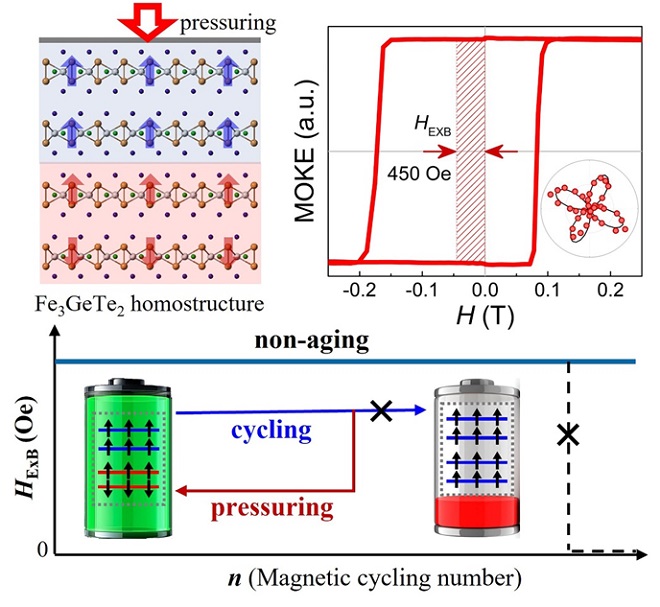
In a research published in Advanced Materials recently, researchers from Hefei Institutes of Physical Science (HFIPS) of Chinese Academy of Sciences, described how they developed a new type of two-dimensional homogeneous bias device with moderate pressure in cooperation with researchers from University of Science and Technology of China.
Compared with three-dimensional similar devices, the two-dimensional bias device was described as "non-aging, extensible and recoverable".
"It provides a new idea for the design of low-dimensional magnetic devices and the study of exchange bias effect mechanism," said SHENG Zhigao from HFIPS, who led the team, "and we expect it to become the core magnetic components in two-dimensional electronic technology and equipment."
Two-dimensional Van der Waals magnetic materials provide an excellent platform for basic magnetic research and low-dimensional magnetic device development due to their layered structure, no dangling bond surface and strong magnetic anisotropy. However, the weak interlayer coupling greatly limits the functional device application of two-dimensional magnetic materials. Therefore, how to effectively achieve strong magnetic exchange through interface engineering has become one of the key issues in the construction of two-dimensional magnetic devices.
In this research, the research team tried lots of materials and technical methods. They found that the two-dimensional iron germanium tellurium (Fe3GeTe2) material with ferromagnetic ground state can be induced into a homogeneous and magnetic heterostructure with ferromagnetic-antiferromagnetic coexistence by uniaxial pressure technology.
At the same time, they discovered that the structure has a practical exchange bias effect.
This pressure-induced phase transition was confirmed by magneto-optical testing, high-resolution transmission electron microscopy, and first-principles calculations.
Since the ferromagnetic-antiferromagnetic coupling of the homogeneous and magnetic heterostructure of the material occurs inside the homogeneous junction, its exchange bias effect exhibited excellent characteristics thanks to the atomically smooth magnetic interface.
"These features (non-aging, extendable, and rechargeable) can not be found in three-dimensional devices," said HOU De, member of the team.
This result paved a new way for the design and development of high-performance two-dimensional magnetic devices, and its excellent exchange bias characteristics provided an opportunity for the effective application of two-dimensional magnetic devices.
The research was supported by the National Key R & D Program, the National Natural Science Foundation of China, the Anhui Provincial Laboratory Direction Fund, the Dean Fund of Hefei Institute of Chinese Academy of Sciences, and the National Key Science and Technology Infrastructure 'Steady State High Magnetic Field Experimental Facility' ( SHMFF ).

Figure. Magnetic transition of (Fe3GeTe2) FGT induced by uniaxial compression, magneto-optical phenomenon of FGT after compression and exchange bias effect of FGT non-aging, extensible and recoverable. (Image by HOU De)